Bartter syndrome entered my life swiftly through my son, Ian Wesolowski. Less than eight months ago he was fighting to stay alive. His potassium, sodium and chloride levels were all extremely low and no one could explain why. Ian was air lifted to Cincinnati Children’s after an eight day stay in a pediatric ICU in West Virginia. Within three days at Cincinnati Children’s, Dr. Dixon and his nephrology team were able to tell us what they thought was causing Ian’s fight for his life.
Bartter Syndrome is a genetic kidney disorder in which the kidneys do not hold electrolytes that the body needs to stay alive. We started treating him for this while we waited for the genetics test to confirm the diagnosis. The treatment worked, and Ian began to thrive again! Although this diagnosis changed our lives drastically, we were ecstatic to have our baby back.
Ian’s routine now consists of receiving sodium chloride, potassium chloride, indocin (a drug that helps keep medication in his kidneys longer) and Zantac four times a day through a G-tube; weekly blood draws to make sure his levels are within the normal range; and twice-weekly occupational and physical therapy appointments. This is a life-long routine for Ian and we tackle each day one at a time. He’s been doing really well the past several months and we have faith that his future will be a bright one.
So after we got through our initial scare with Ian, and learned more about his condition, my sister, Amy, decided she wanted to do something to show her love and support for Ian, as well as raise awareness for this very rare genetic disorder called Bartter syndrome. It’s so rare, in fact, that it occurs in only one in 1,000,000 people. And since it is so rare, it can often be misdiagnosed or go undiagnosed.
Because my sister is a marathon runner, she thought it would be cool to have our entire family come together and run a marathon in support of Ian. Her idea was to have Ian pushed in a stroller by a team of relay runners, but he would be the only one to complete the full marathon. I loved it.
As Amy began to plan and form the team, she had another idea. She wondered if any of Ian’s doctors would be willing to get involved. To our excitement, Dr. Dixon, Ian’s nephrologist, said that he would be honored to be a part of the team – and even run a leg of the relay while pushing Ian!
I was elated. The idea for this race, and the meaning behind it was already so special to me, but adding Dr. Dixon to the team was truly heart-warming. Our race team continued to grow as both the runners and even the non-runners of our family joined. 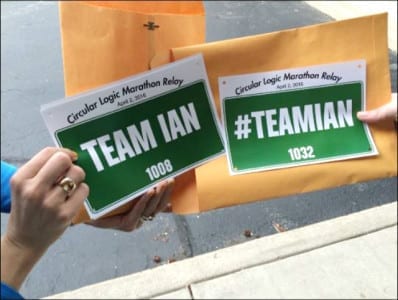 Here’s what we ultimately planned: we had an adult team to push Ian, which consisted of me, my two sisters and their husbands, my brother and Dr. Dixon. Our team was named Team Ian but we also had another team that ran as well, named #TEAMIAN. This team consisted of our other children, who wanted to run to show support and love for my youngest.
Here’s what we ultimately planned: we had an adult team to push Ian, which consisted of me, my two sisters and their husbands, my brother and Dr. Dixon. Our team was named Team Ian but we also had another team that ran as well, named #TEAMIAN. This team consisted of our other children, who wanted to run to show support and love for my youngest.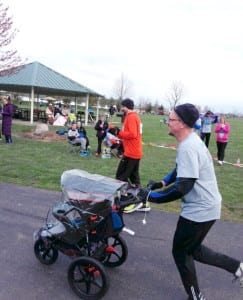
So race day came and Ian enjoyed every minute of it! Well, actually he enjoyed the parts where he was awake – he slept through a lot of it! He was a total champ…he only needed three “pit stops” to grab a bottle, get a diaper changed, and grab his pacifier. He never left the stroller; he was a baby on a mission. When he was awake, he kept the person pushing him company by chatting throughout the course.
Even though race day was extremely cold and windy, we had so much fun working together to complete the task.
I was in complete amazement of the friends, family members, and even local businesses who either ran in the race with us or came out to support us and cheer us on. And I was especially honored by Dr. Dixon, who drove three hours to participate in the race. He is selfless, and I truly believe God placed him in our path to help Ian.
To me, the race was a symbol of encouragement, love, and all of us taking a journey together to achieve a goal as a team. It showed me that we have a support system made up of family, friends and even Ian’s doctor, who will help us through the toughest times as we navigate this little-known disease called Bartter syndrome.
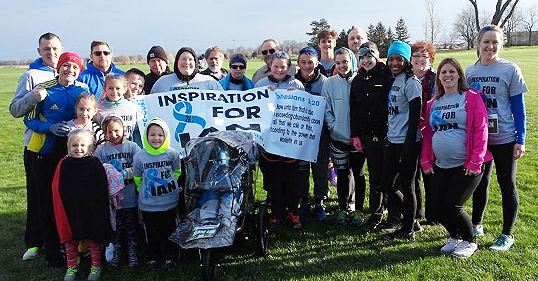

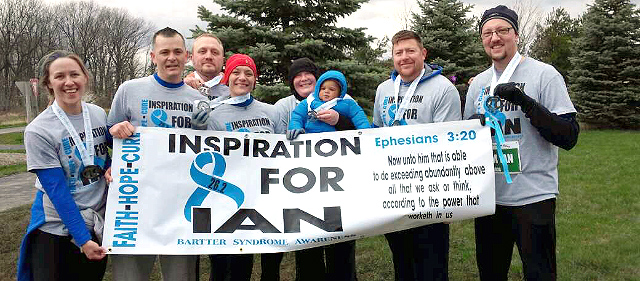


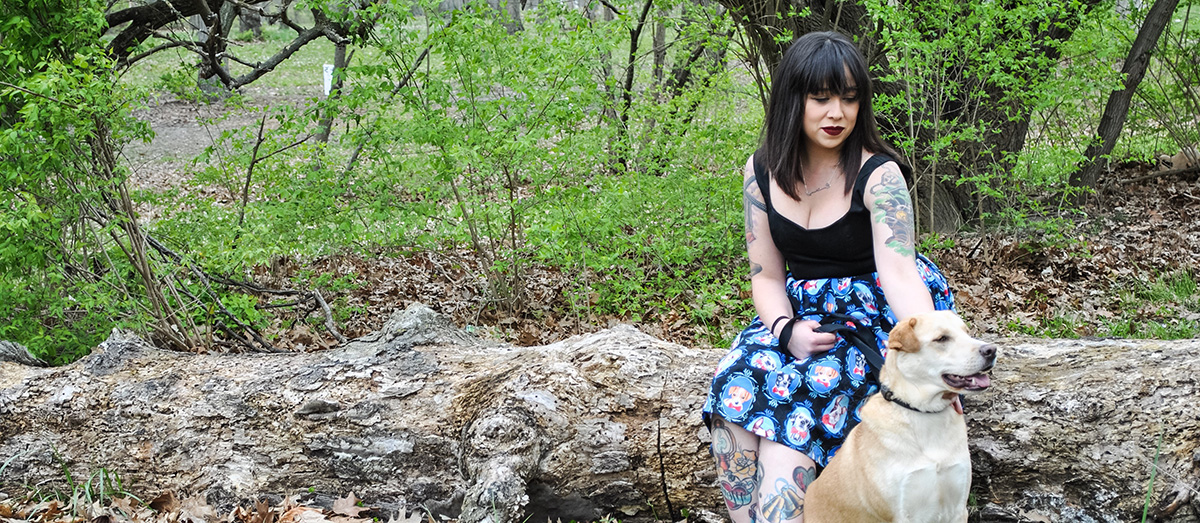
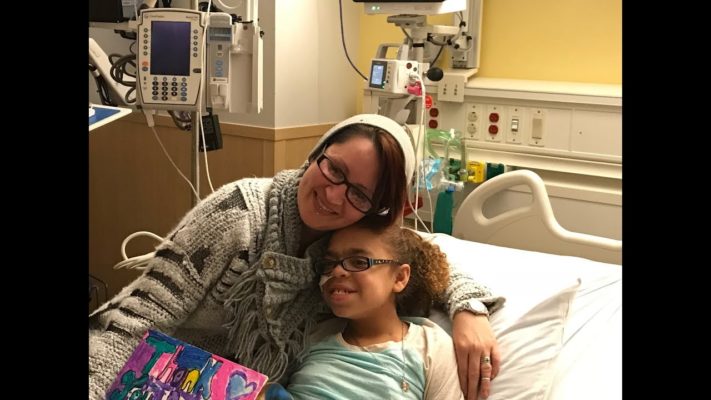
What a beautiful article!